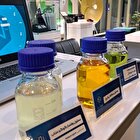Iran-Made Ion Mobility Spectrometer Makes Analysis of Toxins

The company has managed to produce an ion mobility spectrometer with multiple ionization sources. This product is used in the oil and gas industry, gas analysis, including H2S, mercaptan, SO2, and sulfur compounds, Total Sulfur, detection and identification of drugs, explosives, and hazardous gases in air, water, and soil, pharmaceuticals, health, and analysis of drugs and toxins in biological environments.
Ion mobility spectroscopy is a successful technology in detecting trace amounts of chemicals. This technology has been indigenized in Iran and new technologies have been added to it. The basis of this technique is similar to a mass spectrometer in one respect, with the difference that it does not require a vacuum and works at atmospheric pressure. From another perspective, this technique is similar to GC gas chromatography, except that here the ions are separated in a column.
In this method, the molecules of the analyte are introduced into the spectrometer tube along with the carrier gas and are charged there by the ionization source. The charged molecules move under the influence of an electric field and hit the collector. The speed of movement of the molecules under the influence of an electric field depends on the ion mobility of the electric field and is an indicator of species identification.
Quantitative and qualitative measurement of chemicals, drugs, analysis of toxins in food, air quality control, identification and measurement of chemical gases and vapors, detection and analysis of drugs, detection of explosives and chemical warfare gases, etc. are other applications of this product.
In a relevant development in September, Iranian researchers at another knowledge-based company had also succeeded in developing advanced spectroscopic equipment by producing a multi-functional optical spectrometer.
“Optical spectrometer is a tool to study the interaction of light with the material environment (atoms and molecules),” said Maryam Zare’, the managing director of the knowledge-based company.
“The miniature optical spectrometer named Fiztech is a small and portable tool that can be used in UV, Vis, NIR measurements in the range of 190 to 1,100 nm,” she added.
“The miniature optical spectrometer (UV-vis-NIR) has been designed in a way that it has no moving parts and uses a 3,648 pixel array detector for the analysis of different sources of radiation (laser, LED, displays, etc.), analysis of materials (absorption, transmission, reflection, photoluminescence and phosphorescence), color analysis, food analysis, gemology, analysis of semiconductors, plasmonic materials and thin films,” Zare’ said.
Noting that the device enjoys a light and strong aluminum body, she said, “The spectrometer software (UV-vis-NIR) was developed by Fiztech experts and is a practical and user-friendly software that can be installed on all types of Windows operating systems.”
4155/v





















